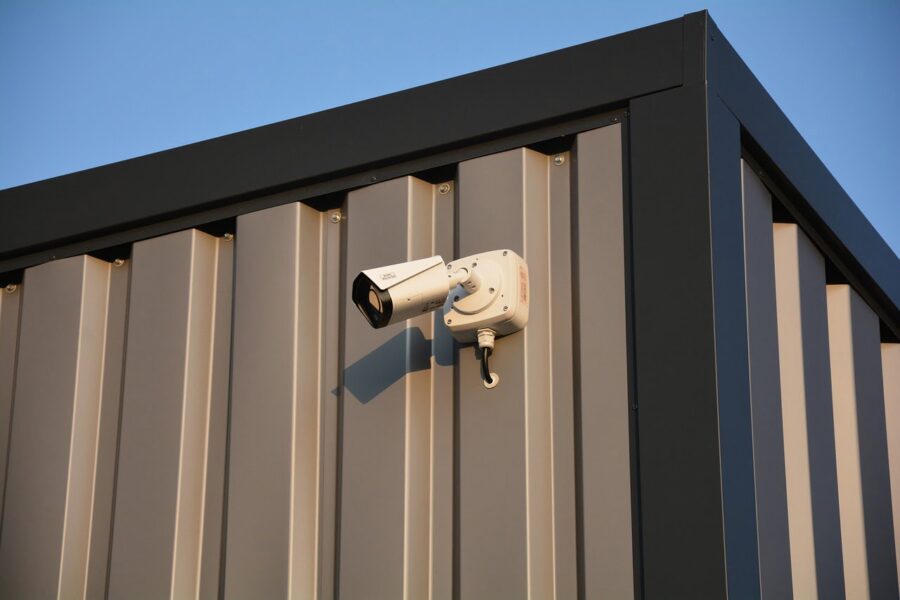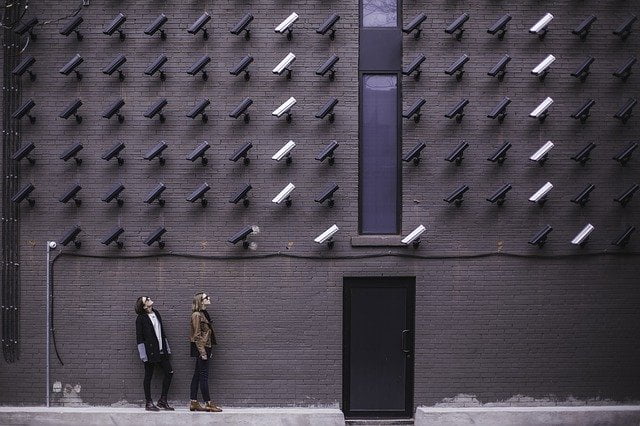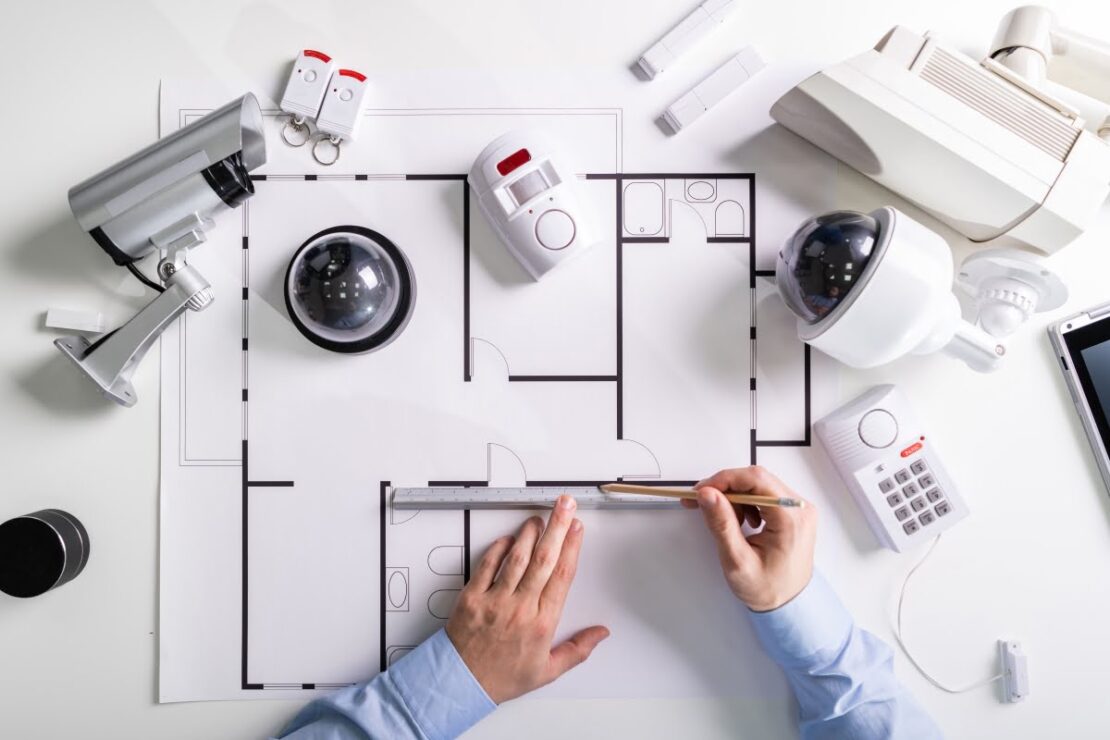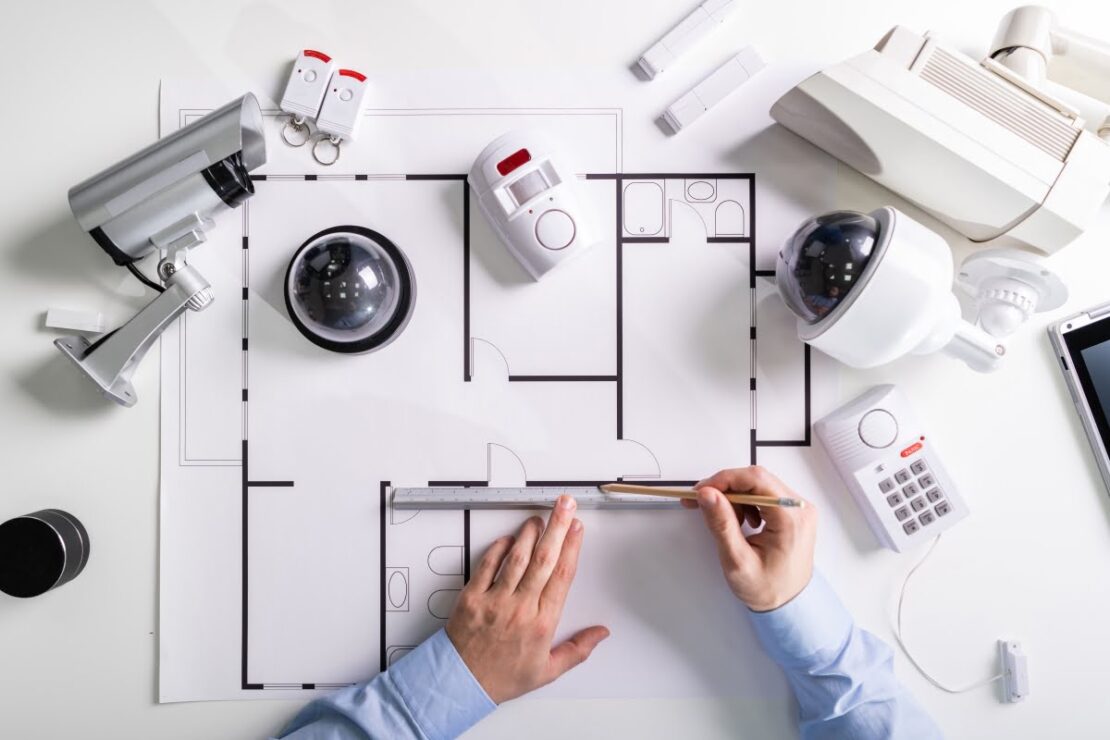
Welcome to part 2 of our security system glossary of terms and definitions.
In part 1 we covered security terms such as access control installation, alarms, CCTV installer, CCTV monitoring, door entry systems, and more.
In part 2, we cover security system terms such as monitored CCTV, remote alarm monitoring, and temperature screening systems, and other related words.
Let’s get started!
Table of contents
- Welcome to part 2 of our security system glossary of terms and definitions.
- L is for local security system
- M is for monitored CCTV, monitored security systems and motion detection
- N is for nuisance alarm
- O is for Orisec and opening / closing reports
- P is for partition and perimeter protection
- Q is for
- R is for remote CCTV monitoring, remote alarm monitoring and more
- S is for security system, security company, silent alarm, solar farm security and more
- T is for temperature screening systems, thermal imaging, talking keypads and more
- U is for user code
- V is for video access control, video intercom, and video suveilllancv
- W is for wireless, wired alarms, and water detectors
- Z is for zone descriptor, zone expanders and more
L is for local security system
Local Security System: These are security systems that aren’t connected to a central monitoring station. For example, when an alarm system is triggered it sounds a local siren and the responsibility to contact the authorities lies with the property owner.
M is for monitored CCTV, monitored security systems and motion detection
Monitored CCTV: Monitored CCTV, otherwise known as CCTV monitoring, is where businesses have their surveillance cameras monitored 24/7 at an ARC. This helps to catch criminals in the act and can reduce the cost of security by up to 80%.
Monitored Security System: In addition to CCTV cameras, other security systems can be monitored remotely such as alarms and access control systems.
Motion Activated Cameras: These security cameras are set to record based on the detection of motion. These surveillance cameras either distinguish pixilation changes, or use built-in motion detectors to activate the recording.
Motion Detection Alarm System: These alarm devices use infrared or microwave detection to detect motion in an alarmed property.
N is for nuisance alarm
Nuisance alarm: When the cause of an alarm triggering can’t be detected, it is termed a nuisance alarm.
O is for Orisec and opening / closing reports
Orisec: This company is a manufacturer of security equipment including control panels, detectors and keypads
Opening & Closing Reports: Security systems that are set up for opening & closing will send a signal to a central monitoring station every time the system is armed or disarmed. This helps the property or business owner monitor the use of his or her security system.
P is for partition and perimeter protection
Partition: A partition refers to a segmented section of a security system. When designing the system, the user can set up various partitions. This means that one area of the alarmed location can be armed, while the other areas stay unarmed. For instance, using retail as an example, the stockroom can be partitioned from the rest of the shop. While people are working, the shop floor is unarmed and the stockroom stays armed.
Perimeter Protection: Simply put, these security systems protect the perimeter of an estate, site or business. Using construction as an example, this is where alarms and CCTV systems are designed to trigger when someone tries to breach the security perimeter.
Preventative Maintenance: The act of regularly inspecting a security system and its alarm devices to verify that all devices are working properly. Preventative maintenance ensures your security system will work when you need it most.
Proximity Card: A badge, tag, or card that grants a user access to a restricted area when placed close to a proximity reader.
Proximity Reader: An access control device that controls an electronic lock. When a proximity card is placed near a proximity reader access is granted.
Q is for
There are no glossary terms for Q at this moment
R is for remote CCTV monitoring, remote alarm monitoring and more
Remote CCTV monitoring: Otherwise known as monitored CCTV, remote CCTV monitoring is where a business’ video surveillance cameras are viewed 24/7 by and offsite security team
Remote alarm monitoring: Otherwise known as monitored alarm systems, remote alarm monitoring is where a business’ security alarm systems are viewed 24/7 by and offsite security team
Remote Keypad: This is a non-fixed keypad that can both arm & disarm a security system from a defined distance from the control panel. Remote keypads are similar to key fobs.
S is for security system, security company, silent alarm, solar farm security and more
Security Camera: These are high-quality CCTV surveillance cameras that are used for CCTV monitoring or video surveillance.
Security Company: A professional business which specialises in security systems installation. These security systems include CCTV, access control, intruder alarms and more.
Security System: An electronic system designed to prevent criminal activity such as theft, vandalism, or intrusion. CCTV, intruder alarm and access control systems are all types of security systems.
Security System Installation: the method by which a security system is professionally installed
Silent Alarm: A security alarm that makes no audible noise. The control panel notifies central station operators of an alarm without setting off the security system sirens. Silent alarms are used when apprehension of an intruder is the main goal of the security system. Because there is no audible alarm at the alarmed location, the trespasser will have no idea that he or she tripped an alarm.
Siren: A security system device that emits a loud noise to scare away trespassers and alert nearby witnesses that an alarm event has occurred.
Solar Farm Security: Otherwise known as solar site security. This is where a security company designs and installs security systems on a solar site, such as CCTV, perimeter protection systems, access control and intruder alarms
Solar Farm CCTV: This is where a CCTV installation company designs and installs a CCTV system for a sale site or farm
Solar site perimeter protection: These security systems are designed to protect the perimeter of a solar site. Solar farms are often vast and the perimeter can be multiple kilometres.
System Status Keypad: Remote keypad for a security system that visually or audibly alerts a user to the system status of the alarm system. For instance, if a back door is open and the zone is in fault the keypad would tell or show the user so that they do not arm their system with the zone in violation.
T is for temperature screening systems, thermal imaging, talking keypads and more
Talking Keypad: A security system keypad that performs normal keypad functions, but also can broadcast system status via audio and other event notices in plain English.
Temperature Screening Systems – these are new security used to check people’s temperature on arrival to a business premises. Temperature screening systems are used to help prevent the spread of viruses in premises or site. Temperature screening and thermal imaging systems are used by office based businesses, gyms, leisure centres, hotels, retail outlets, schools and more
Temperature Sensor: A security system device, usually CCTV cameras, that sends an alarm when a preset temperature is reached or a rapid change in temperature occurs. These systems can detect abnormally high or low temperatures. These systems can be used for businesses where the temperature is key such as chemical waste sites, factories, and food processing sites.
Thermal imaging cameras: these security cameras are used as part of a temperature screening system to detect someone’s body temperature. These cameras when used as part of a temperature screening system are designed to detect someone with a high temperature on arrival to a business premises or site. Temperature screening and thermal imaging camera systems are used by train stations, office-based businesses, gyms, leisure centres, hotels, retail outlets, schools and more
U is for user code
User Code: A four-digit code used to arm and disarm a security system. Certain security systems allow for multiple user codes so that you can keep track of who armed or disarmed the system.
V is for video access control, video intercom, and video suveilllancv
Video access control systems: Access control systems that use video to grant or deny access. See video intercom and video door entry below
Video Door Entry Systems: otherwise known as video intercom systems. These security systems provide businesses with an advanced, modern form of access control.
Video door station: The unit video is viewed on internally, broadcast from the ext=erbnal intercom screen
Video door phone installation: Another term for video intercom, video door entry, and video entry
Video entry system installation: A security system that uses video to grant or deny access to a site, building, or premises
Video Intercom: these video access control systems enable businesses to grant access to site visitors and employees. Upon arrival, to a business, the visitor calls through via the video intercom system and is granted access once they have been verified via video
Video intercom system with door release: A video intercom system that, once triggered releases the door
Video Surveillance: Otherwise known as CCTV surveillance. These security systems use a digital video recorder (DVR) / CCTV system to monitor a location. Video data from the security cameras is stored on the DVR and can be retrieved in the event of any security breaches and as evidence in criminal prosecutions. Video surveillance systems can also be used as a management tool to keep an eye on employees and site visitors.
Video Verification: When an alarm is triggered, it can be verified by using the security / CCTV cameras to verify it.
Visitor intercom: An intercom system such as video or audio that visitors use to announce their arrival at site
W is for wireless, wired alarms, and water detectors
Warehouse CCTV – security cameras that help protect and secure warehouses
Warehouse security systems: CCTV, access control and security alarms are all types of warehouse security systems
Water Detector: This is where a security system is triggered by the presence of water. This is a perfect security system for businesses at risk of flooding
Wired Alarms: these are hardwired security alarm systems
Wired security systems: these are hardwired security systems covering access control, CCTV and alarms
Wireless access control installation: n access control system that operates wirelessly via WIFI connectivity
Wireless intercom systems for business: a commercial intercom system that operates wirelessly via WIFI connectivity
Wireless: A connection between alarm devices that does not use wires. Most wireless connections between system devices use RF wireless signals while wireless connections between security systems and central monitoring stations use cellular signals.
Wireless security systems: these are wireless security systems covering access control, CCTV and alarms
Wireless video door entry system: A video intercom that operates wirelessly via WIFI connectivity
X is for
There are no glossary terms under the letter “X” at this time.
Y is for
There are no glossary terms under the letter “Y” at this time.
Z is for zone descriptor, zone expanders and more
Zone: every alarms device on a wireless security system is its own zone. On hardwired security systems you may have many similar security devices in one zone. For instance, every window contact in one area of a business may be programmed in the same zone. Zones are used by businesses to identify which alarm device triggered the alarm system.
Zone Descriptor: Businesses may have different alarm zones, covering different areas of the site. By labeling each zone accordingly a business can determine where the alarm was triggered.
Zone Expanders: Zone expanders provide additional alarm zones for a security system beyond what the control panel has as default.
Here at Safeguard Systems we can design and install a range of security systems for businesses.
We hope you’ve found this blog interesting. If you have any questions you can call us on 0800 689 1835.


